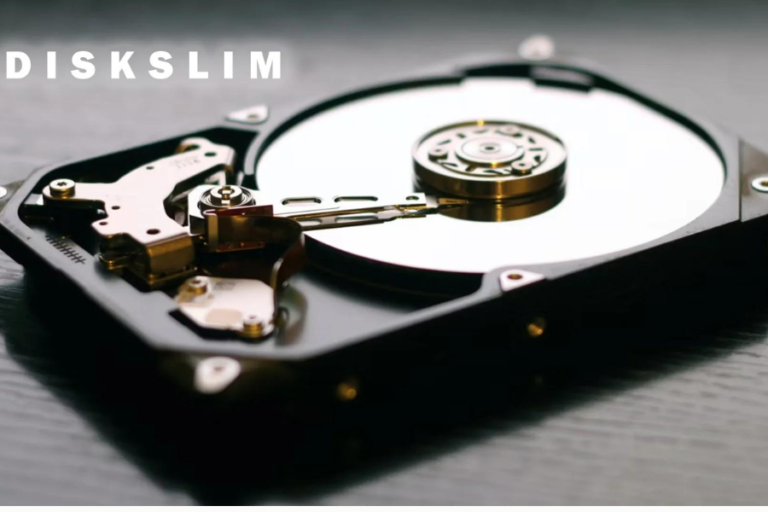Navigating the Future with XVIF: A Revolutionary Approach to Digital Connectivity
Introduction
In the consistently advancing domain of innovation, the requirement for consistent computerized association and availability has never been seriously squeezing. Enter XVIF, a progressive idea ready to reclassify how we impart and interface in the computerized age. In this article, we’ll investigate the Drawn out Virtual Connection point Structure (XVIF), its beginnings, specialized determinations, applications, advantages, difficulties, and future possibilities.
Exploring the Revolutionary Concept of XVIF
At its core, XVIF represents a paradigm shift in digital communication. By extending virtual interfaces, XVIF offers a versatile framework for enhancing connectivity and streamlining data exchange across diverse digital platforms. This groundbreaking approach aims to bridge gaps between disparate systems, enabling smoother and more efficient interactions.
Understanding XVIF: An Overview of the eXtended Virtual Interface Framework
XVIF, short for eXtended Virtual Interface Framework, lays the foundation for efficient data transmission and secure communication in the digital realm. Its innovative architecture facilitates seamless integration and interoperability, making it a cornerstone of modern digital infrastructure. The framework’s design prioritizes not only speed and efficiency but also robust security measures to protect sensitive information.
Tracing the Origins
The journey of XVIF traces back to the quest for enhanced connectivity and efficiency in digital systems. Over the years, XVIF has evolved from a conceptual framework to a robust protocol, driven by the need for optimized digital interaction. This evolution has been marked by continuous improvements and adaptations, reflecting the dynamic nature of technological advancement.
Delving into Technical Specifications and Components of XVIF Framework
XVIF comprises a comprehensive set of technical specifications and components designed to optimize data transmission and ensure secure communication. Key elements include:
- Encryption Protocols: Advanced encryption standards to protect data integrity and privacy.
- Data Compression Algorithms: Efficient algorithms to minimize data size, enhancing transmission speed.
- Interoperability Standards: Guidelines to ensure compatibility across different platforms and devices.
- Scalable Architecture: A flexible framework capable of adapting to varying data loads and network conditions.
Each component plays a crucial role in the efficacy of XVIF, collectively contributing to its robust performance and security.
Applications and Advantages
The versatility of XVIF extends across various industries and domains, unlocking myriad possibilities for innovation and efficiency.
Industrial Integration
In industrial settings, XVIF enables seamless integration of disparate systems, leading to improved operational efficiency and productivity. By standardizing communication protocols, XVIF streamlines data exchange and enhances collaboration across different components of the industrial ecosystem. This integration facilitates better monitoring, control, and optimization of industrial processes.
Smart Home Automation
In the realm of smart home automation, XVIF empowers homeowners to connect and control various devices and appliances seamlessly. From smart thermostats to security cameras, XVIF-enabled systems offer unprecedented convenience and efficiency in managing household tasks. The framework’s interoperability ensures that devices from different manufacturers can work together harmoniously, providing a unified smart home experience.
Benefits of XVIF
The reception of XVIF offers a plenty of advantages, going from upgraded information security to further developed productivity and network.
Improved Information Security: Strong encryption conventions defend touchy data from unapproved access.
Further developed Productivity: Effective information pressure calculations guarantee quicker information transmission and diminished inactivity.
Consistent Network: Interoperability guidelines work with smooth cooperation between assorted frameworks and gadgets.
Adaptability: The adaptable design of XVIF permits it to deal with shifting information loads, making it appropriate for both limited scope and enormous scope applications.
By utilizing XVIF, organizations and people the same can open new open doors for advancement and development in the computerized scene.
Challenges and Future Prospects
Despite its potential, XVIF is not without its challenges. Addressing compatibility issues and security concerns remains paramount to ensure the widespread adoption and success of XVIF. However, with ongoing advancements in technology, the future of XVIF looks promising, with new innovations and applications on the horizon.
Addressing Compatibility Issues and Security Concerns
One of the key difficulties confronting XVIF reception is guaranteeing similarity with existing frameworks and tending to potential security weaknesses. Executing powerful security conventions and encouraging joint effort among partners are significant stages in beating these difficulties. Also, consistent updates and upgrades to the system will be important to keep up with similarity with developing innovations.
Overcoming Technical Hurdles and Enhancing User Adoption
Specialized obstacles and client opposition might present impediments to XVIF reception. Teaching clients about the advantages of XVIF and giving easy to understand connection points are fundamental stages in advancing far reaching reception and acknowledgment of XVIF. Clear documentation and support assets can help clients comprehend and carry out the system really.
Looking Ahead: Implementing XVIF
As businesses and individuals embrace digital transformation, the role of XVIF will become increasingly prominent. Strategies for integrating XVIF into business operations must prioritize security compliance and address technical requirements to maximize its potential.
Strategies for Integrating XVIF into Business Operations
Organizations hoping to carry out XVIF should foster complete techniques that envelop security consistence, specialized prerequisites, and partner commitment. Key advances include:
Security Consistence: Sticking to industry guidelines and best practices to relieve dangers and protect delicate information.
Specialized Necessities: Guaranteeing framework similarity and execution streamlining for consistent XVIF arrangement.
Partner Commitment: Teaming up with partners to address concerns and work with smooth execution.
By adopting a proactive strategy to joining, organizations can use XVIF to drive development and seriousness.
Ensuring Security Compliance and Addressing Technical Requirements
Security compliance is paramount in the implementation of XVIF. Organizations should stick to industry principles and best practices to moderate dangers and protect delicate information. Additionally, addressing technical requirements such as system compatibility and performance optimization is essential for the successful deployment of XVIF.
Real-World Case Studies: Demonstrating Practical Applications and Realized Benefits
Analyzing genuine contextual analyses gives important bits of knowledge into the reasonable applications and advantages of XVIF. From assembling offices to savvy homes, XVIF has exhibited its adequacy in further developing proficiency, network, and security in different settings.
Producing Offices: XVIF has been carried out to smooth out correspondence among hardware and control frameworks, upgrading functional productivity and lessening margin time.
Savvy Homes: XVIF-empowered brilliant homes offer property holders consistent command over their gadgets, upgrading accommodation and energy proficiency.
These contextual analyses feature the extraordinary capability of XVIF in different genuine situations.
Conclusion: Navigating the Future with XVIF
All in all, XVIF addresses a pivotal headway in computerized correspondence and network. By embracing XVIF, organizations and people can open new open doors for advancement, effectiveness, and development in the computerized scene. As we explore the intricacies of the computerized age, XVIF remains as an impetus for change, engaging us to shape the eventual fate of network and connection.
Through its imaginative engineering, hearty safety efforts, and adaptable applications, XVIF is ready to reclassify how we communicate and associate in the advanced world. As innovation keeps on developing, XVIF will without a doubt assume a pivotal part in driving computerized change and cultivating an additional associated and proficient future.
FAQs
What is XVIF?
XVIF, or eXtended Virtual Interface Framework, is a revolutionary framework designed to enhance digital communication and connectivity. It aims to streamline data exchange and ensure seamless integration across various digital platforms, making it a cornerstone of modern digital infrastructure.
How does XVIF work?
XVIF works by extending virtual interfaces to enable smooth and efficient data transmission. Its architecture includes advanced encryption protocols, data compression algorithms, interoperability standards, and a scalable framework that adapts to varying data loads and network conditions. These components collectively ensure secure and efficient communication between disparate systems.
What are the main components of XVIF?
The main components of XVIF include:
- Encryption Protocols: Advanced standards to protect data integrity and privacy.
- Data Compression Algorithms: Efficient algorithms to minimize data size and enhance transmission speed.
- Interoperability Standards: Guidelines to ensure compatibility across different platforms and devices.
- Scalable Architecture: A flexible framework capable of adapting to varying data loads and network conditions.
What are the applications of XVIF?
XVIF has a wide range of applications across various industries, including:
- Industrial Integration: Facilitating seamless communication and collaboration between different systems, enhancing operational efficiency and productivity.
- Smart Home Automation: Enabling homeowners to connect and control various devices and appliances seamlessly, providing convenience and efficiency in managing household tasks.
What are the benefits of using XVIF?
The benefits of using XVIF include:
- Enhanced Data Security: Robust encryption protocols safeguard sensitive information from unauthorized access.
- Improved Efficiency: Efficient data compression algorithms ensure faster data transmission and reduced latency.
- Seamless Connectivity: Interoperability standards facilitate smooth interaction between diverse systems and devices.
- Scalability: The flexible architecture allows XVIF to handle varying data loads, making it suitable for both small-scale and large-scale applications.
What challenges does XVIF face?
XVIF faces several challenges, including:
- Compatibility Issues: Ensuring compatibility with existing systems and technologies.
- Security Concerns: Addressing potential security vulnerabilities.
- Technical Hurdles: Overcoming technical obstacles that may impede adoption.
- User Resistance: Educating users about the benefits and promoting widespread acceptance of XVIF.
How can businesses integrate XVIF into their operations?
To integrate XVIF into business operations, organizations should:
- Develop Comprehensive Strategies: Encompass security compliance, technical requirements, and stakeholder engagement.
- Ensure Security Compliance: Adhere to industry standards and best practices to mitigate risks and safeguard sensitive data.
- Address Technical Requirements: Ensure system compatibility and performance optimization for seamless XVIF deployment.
- Engage Stakeholders: Collaborate with stakeholders to address concerns and facilitate smooth implementation.
Are there any real-world examples of XVIF in action?
Yes, there are several real-world examples of XVIF in action:
- Manufacturing Facilities: XVIF has been implemented to streamline communication between machinery and control systems, enhancing operational efficiency and reducing downtime.
- Smart Homes: XVIF-enabled smart homes offer homeowners seamless control over their devices, enhancing convenience and energy efficiency.
What does the future hold for XVIF?
The future of XVIF looks promising, with ongoing advancements in technology leading to new innovations and applications. As businesses and individuals continue to embrace digital transformation, XVIF is expected to play an increasingly prominent role in driving connectivity, efficiency, and security in the digital landscape.
How does XVIF enhance digital security?
XVIF enhances digital security through its advanced encryption protocols, which protect data integrity and privacy. By implementing robust security measures, XVIF ensures that sensitive information is safeguarded from unauthorized access and potential vulnerabilities are addressed.
Can XVIF be used in both small-scale and large-scale applications?
Yes, XVIF’s scalable architecture allows it to be used in both small-scale and large-scale applications. Its flexible design adapts to varying data loads and network conditions, making it suitable for a wide range of scenarios, from individual smart homes to large industrial facilities.






